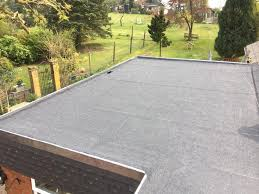Flat roofs have many advantages over sloped roofs. They are also cheaper to install as they don’t require as much work or craftsmanship as sloped roofs. Modern roofs use a galvanised rubber called EDPM, which is more effective than the traditional felt. There is also the benefit of having more space as the roof will not need to be as strong. There are companies who can certainly give you some advice and quotes but before you commit it might be an idea to see what are the hazards involved in a flat roof. These are all avoidable, but it is a good idea for you to be aware.

Insurance for flat roofs can be more expensive, as they may lead to the problems we will discuss later. There are insurance companies who do not consider this an issue, and they will happily insure you if certain criteria is met. For Roofers Bristol, visit www.mogfordprescott.co.uk/roofers-bristol

Flat roofs are not completely flat. They have a slight pitch and angle to prevent the following from happening:
- Ponding. Ponding is when small to large puddles form on the roof surface, causing the water to soak through. This is likely to happen if traditional felt is being used. However, EDPM is a more resilient material that is impervious against moisture. In extreme cases, a few drainages may be installed or the roof slope changed.
- Blistering. This is a problem with older felt roofing. In a similar situation to a human blister, air can build up underneath and behind the roof surface. It raises the surface, and it is possible that the blister will rupture over time. This usually involves replacing the material, cleaning and resealing the area.
- Splitting. Felt is a material that we keep mentioning, but it’s more susceptible than the modern materials. It usually happens after bad weather, especially cold. The edges can become frozen or rips are made worse.








